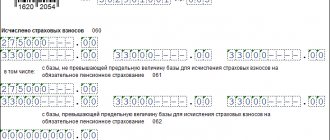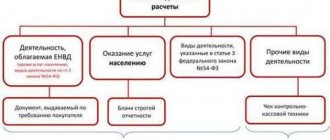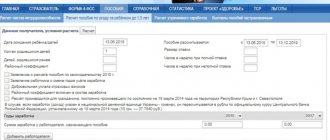In the context of globalization and open borders, foreign business trips of employees of Russian government agencies and commercial companies have long ceased to be an extraordinary phenomenon. Foreign business trips are governed by essentially the same rules as domestic business trips. But there are a number of nuances associated specifically with sending an employee to another state.
- 2 Registration of a foreign business trip
2.1 Required documents2.1.1 Order to send an employee on a business trip abroad
- 2.1.2 Photo gallery: sample of filling out the T9a form for three seconded employees
- 2.1.3 Service assignment and travel certificate
Who can be sent on business trips abroad and who cannot?
The restrictions regarding employee business trips abroad are the same as for domestic trips.
It is strictly prohibited, as in the case of business trips within Russia, to send the following employees abroad:
- pregnant women;
- employees under 18 years of age, except for creative workers and athletes;
- employees on an apprenticeship contract, if the foreign business trip is not related to apprenticeship;
- disabled people if the business trip contradicts their individual rehabilitation program;
- registered candidates for elections during the latter period.
An employee who has a child under three years old can be sent on a business trip abroad only with her written consent
Written consent for foreign or domestic business trips is required from the following categories of workers:
- women raising children under three years of age;
- single mothers, fathers or guardians of children under five years of age;
- parents or guardians of disabled children;
- workers caring for sick relatives based on a medical report.
All other employees can be sent on business trips, including foreign ones, without any restrictions.
Labor Code: payment for business trips on weekends
Average earnings for weekends and holidays spent on a business trip are paid in two situations:
- If the specialist actually worked on these dates.
- If the specified days include travel time, departure to your destination or return to your hometown.
These dates include the rules on payment of overtime work formulated in Art. 153 Labor Code of the Russian Federation. Salary calculations during a business trip are made in one of two options:
- The employee is not given additional rest time and is paid for the day worked at double the rate.
- The employee is given one day off and is paid in the “standard” way: in the amount of one average daily salary.
The company has the right to increase remuneration for overtime work in accordance with the provisions of local regulations. The amount due to the specialist is subject to income tax and contributions. It is shown in the 2-NDFL certificate with the code “2000”.
The procedure for paying for business trips assumes that for weekends and holidays during which the specialist was on vacation, the transfer of average daily earnings is not provided. Employee compensation is limited to per diem.
Duration of business trip abroad
The legal requirements for business trips both in Russia and abroad in 2021 are the same and do not have a clearly defined framework. By default, a business trip cannot be less than one day and must have a deadline. If it cannot be established, it is determined approximately.
For example, if an employee goes on a business trip that can last either a week or a month, it is advisable to initially arrange a business trip for a week, and subsequently extend it as necessary.
Even if the business trip is issued for a hundred years, with all the absurdity of such a decision, there is nothing to complain about from the standpoint of the law. However, it is doubtful that such an option would be in the interests of the company. After all, she must pay the advance to the employee immediately and in full.
During the Soviet period, central newspapers could send their employees abroad to work as their own correspondents. For example, in Komsomolskaya Pravda the standard period for such a business trip was three years.
The main document that stipulates the duration of a trip abroad is a business trip order. It is on this basis that the advance payment is calculated, which must be paid to the posted worker before departure.
What is a business trip
According to Art. 166 of the Labor Code of the Russian Federation, a business trip is a business trip from the place of permanent employment of a specialist, which has a purposeful nature, initiated by the employer company.
EXAMPLE
If engineer Petrov is sent by his employer to a plant in another city to participate in the repair of a machine, this will be recognized as a business trip.
If Petrov went to a neighboring city to visit his family and decided to drop by the plant to make sure the equipment was working, his trip is not considered a business trip.
In Art. 166 of the Labor Code of the Russian Federation separately stipulates that the concept of “business trip” does not apply to citizens hired for traveling work who are obliged to perform the functionality assigned by the employer while on the road (for example, truck drivers, conductors).
According to Art. 167 of the Labor Code of the Russian Federation, during a business trip the specialist retains his position.
Payment and confirmation of expenses on business trips abroad
Along with the standard set of expenses for business trips in Russia, including compensation for travel there and back, costs of renting accommodation, daily allowance and other expenses agreed upon with the employer, when traveling abroad the following expenses of the business traveler are subject to additional compensation:
- production of a foreign passport;
- costs for obtaining a visa (consular, visa fees, visa center services, etc.);
- airport and port taxes.
The biggest difficulty is always compensation and confirmation of expenses in foreign currency incurred by the employee directly while staying abroad. For example, expenses for hotels, telephone conversations, travel around the country of destination, if the employee was sent to several cities, or to different countries, when to several countries, purchases made for the needs of the company (for example, the employee was sent to an international exhibition and there purchased the employer is interested in product samples), etc.
There are two ways to confirm such expenses:
- The advance is paid to the employee in rubles, he exchanges this amount for foreign currency and submits a certificate of exchange to the accounting department in the package of reporting documents for the business trip. Expenses are then recognized in the currency in which they are reflected in the foreign supporting documents and converted into rubles at the rate specified in the exchange certificate. For example, an employee received an advance of 55 thousand rubles and purchased dollars at the rate of 1:60. His confirmed foreign exchange expenses amounted to one thousand dollars. At the exchange rate from the exchange certificate, it will be 60 thousand rubles. Since he already received 55 thousand before leaving, the company still owes him five thousand rubles. The disadvantage of this method is that when traveling to countries where currencies other than the dollar or euro are used, it may be problematic to purchase the necessary currency units, for example, Kazakh tenge, Belarusian rubles, Polish zlotys, Swedish crowns or British pounds sterling. especially outside Moscow.
- When the employee does not have a certificate of currency exchange (and the advance can be given to him immediately in foreign currency - the law allows this), expenses are recognized in the currency in which they were incurred, based on primary supporting documents (invoices, tickets, checks, etc.) . p.) and are converted into rubles at the Bank of Russia exchange rate on the date of approval of the advance report.
Daily allowances for trips abroad are calculated in the currency in which they are stated in the company’s Business Travel Regulations.
For example, an employee was posted to the Czech Republic. Before the trip, he prepared a passport and applied for a visa using the services of a visa center. He incurred all these expenses in rubles. He also paid for the round-trip plane ticket in rubles. Daily allowances in the Business Travel Regulations are indicated in dollars. And in the Czech Republic he paid for a hotel with crowns. The advance for the business trip was transferred to the employee’s card in rubles; he did not make an exchange, only withdrew cash or paid by card, including abroad.
In this case, the calculation is carried out according to the following scheme:
- All expenses that the employee, according to supporting documents, incurred in rubles are recognized in rubles.
- Hotel costs according to the invoice are converted from Czech crowns into rubles at the Bank of Russia exchange rate on the day the advance report is approved.
- Daily allowances are also converted from dollars into rubles at the Bank of Russia exchange rate on the day the advance report is approved.
- The total amount of confirmed expenses in rubles is compared with the advance payment issued.
Documents to confirm daily allowance
In 2015, the law allowed not to issue a business assignment for a business trip. Then, in order to confirm the total duration of the business trip, it is necessary to use travel tickets, hotel check-in documents and other forms.
All of them, together with the advance report in Form AO-1, must be transferred to the accounting department after return. If there are no such documents, then the receiving company can request a copy of the order or a memo with notes from the responsible persons and a seal imprint.
Since 2021, a provision has come into effect regarding the use by a business traveler of his personal transport for the purpose of arriving at and leaving the place of business trip. In this case, a memo from him with a waybill and receipts for fuel and lubricants attached to it is used as confirmation.
But the employee is not required to provide documents confirming the purpose of the expenditure, and indeed the fact of spending the received daily allowance. The employer is obliged to pay them in the prescribed amount by law, but how and on what the employee spends them is his personal business.
Attention! Details on how to send an employee on a business trip are described here.
Daily allowance for business trips abroad in 2018
The Tax Code of the Russian Federation sets the maximum amount of daily allowance for business trips abroad, which is not subject to taxation, at the level of 2.5 thousand rubles per day. But this does not mean that it is impossible to pay them in excess of the stated amount. It is possible, but there will be tax costs.
The employer himself is free to pay his employees at least 1 million rubles or even dollars per day. As long as he doesn't end up going broke.
The legislation stipulates only one requirement for the company regarding daily allowances, including for business trips abroad - their amount must be indicated in the local regulations. Usually, the Regulations on Business Travel are used for this, but it can also be done with a separate order approving the amount of daily allowance.
At the same time, the company has the right to differentiate the amount of daily allowance depending on the rank of the employee. For example, 20 dollars a day for an ordinary specialist, 35 for a middle manager and 50 for a top manager. A similar policy is appropriate if daily allowances are calculated in rubles.
There is unofficial information that when one of the deputies of the State Duma of previous convocations traveled abroad, the people’s choice himself was paid a daily allowance at the rate of $500 per day, and ordinary members of his retinue were paid $100 each.
It seems logical to differentiate these compensations depending on the country of destination. After all, if we designate the same daily allowances for the UK and Tajikistan, then in light of the difference in prices between these countries, there will be no end to those who want to go to Dushanbe and get a chance to bring the lion’s share of the allocated amount back without the obligation to return it to the cash register, but to London, where those You won’t run away with the money, no matter how much you have to send it as punishment.
Various foreign business publications, for example, the British The Economist, regularly publish ratings of the most expensive countries and cities in the world. Based on these data, large international companies determine the amount of compensation for their employees sent to different cities and countries, both for long periods and for short business trips.
It should also be taken into account that daily allowances, according to the standard approved by the company for foreign business trips, are paid exactly for those days that the employee actually spends outside of Russia. So, if he went on a foreign business trip, for example, by train or personal car and crossed the border not on the day of departure, during the time he was traveling around the country, he is entitled to daily allowance, but according to the norm for business trips in Russia.
Daily allowances at the rate for foreign business trips are accrued to the business traveler from the moment he crosses the border according to the stamp in the international passport. Even if he drove around Russia all day, and entered a foreign country at 23:59, this rule still applies. But on the way back, starting from the date of entry into Russia, daily allowances are already accrued within Russia.
For example, on January 10, an employee left Moscow on a business trip to Finland by train. He crossed the border in the morning of the next day, spent five days in Helsinki, and on the evening of January 16 he went back by train and entered the Russian Federation on the morning of January 17. It turns out that he spent a total of eight days on a business trip - from January 10 to January 17 inclusive (on a business trip abroad, as well as when traveling around Russia, the days of departure and arrival are considered the calendar days of departure and arrival of the employee from/to the starting point). Of these, two days - January 10 and 17 - are paid per diem according to the standard for domestic trips, and the remaining days - at the rate approved by the company for Finland.
Let’s assume that the daily allowance for trips around the Russian Federation in a company is 500 rubles per day, and for Finland - 2000 rubles.
This means that the calculation must be carried out according to this scheme:
- 2x500=1000 - daily allowance for days of departure and arrival.
- 6x2000=12000 - daily allowance for the time spent in Finland.
- 12000=1000=13000 - total amount of daily allowance.
In total, the employee is entitled to 13 thousand rubles in daily allowance.
Let's consider another option. A Moscow company sent an employee to Bratislava and Vienna. He flew from Moscow by plane to Bratislava, spent three days there, in the evening of the third day he went by train to Vienna, where he arrived on the same day, spent the night in a hotel and spent three days in the Austrian capital, flying to Moscow at lunchtime on the third day. The daily allowance for Slovakia in the company is 40 dollars per day, for Austria - 50, for trips around Russia - 500 rubles per day.
So, our employee crossed the border with Slovakia on the day of departure. This means that he is entitled to daily allowance for the first day of his business trip according to the Slovak norm. The picture is similar for the next day, which he spends entirely in Slovakia.
But on the evening of the third day he went to Vienna and on the same day he was already there (the drive from one capital to another is no more than two hours). This means that he is entitled to daily allowance at the Austrian rate. The same schedule for the next two days.
The exception is the last day of the business trip - having departed from Vienna by plane, he flew by plane that day, our employee was in Moscow on the same day. And since this happened on the way back, he has the right to count only on domestic Russian daily allowances for the last day of his business trip.
So, let's start the calculation:
- 40x2=80 - daily allowance according to the Slovak norm.
- 50x3=150 - daily allowance for the stay in Vienna.
- 500x1=500 - daily allowance for the last day of a business trip, calculated at the domestic Russian rate.
- 80+150=230 - total daily allowance in foreign currency for the duration of your actual stay abroad.
- In total, we owe the employee 230 dollars and 500 rubles. Further calculation depends on the currency in which we gave him the advance and whether he has a certificate of exchange, if in rubles. Conversion of dollars into rubles for final reconciliation with the amount of the ruble advance is carried out at the rate indicated in the exchange certificate, or the rate of the Bank of Russia on the day of approval of the advance report.
A standard ticket on most European railways only entitles you to stay on any train on a certain day on a paid section of the route. This means that it cannot serve as confirmation of crossing the border, because the time of arrival is not indicated in it. A foreign passport will not help us either, since Slovakia and Austria are part of the Schengen zone, and there is no passport control at the border between them. To solve the problem, you can recommend that the employee make a reservation for a specific seat on a specific train, which is done for a fee (but these are also travel expenses that the company is obliged to reimburse him) or travel by bus - tickets are sold for a specific flight indicating the departure time and arrival.
In the last example considered, it will be more profitable for the company if the employee spends the night not in Vienna, but in Bratislava, where there are cheaper hotels, and goes to Austria in the morning. This would save $10 on his per diem. But no one has the right to force an employee to do exactly that.
Procedure for paying daily allowances
Daily allowances are reimbursed to the employee for each day he is on a business trip, including weekends and holidays (clause 11 of Decree of the Government of the Russian Federation of October 13, 2008 No. 749, hereinafter referred to as Decree No. 749).
See the material “What are daily expenses on a business trip?”
The actual duration of the business trip is confirmed by travel documents, and in case of their loss - by documents of residence. It is also often advisable to draw up a business trip memo. It will help confirm the period of stay on a business trip if for some reason it is impossible to present documents of residence. In this case, the host party must make notes on the dates of arrival and departure in the memo (clause 7 of Resolution No. 749).
When traveling to the place of performance of an official assignment in a car (personal or official), documents confirming the dates of travel are attached to the official note: waybills and/or route sheets, receipts and checks from gas stations, etc.
For more information about spending daily allowances, see the material “It is not required to confirm the employee’s spending of daily allowances .
A one-day business trip has its own peculiarities: if the business trip does not go beyond Russia, daily allowances are not paid, and for a business trip abroad, their amount will be 50% of their usual amount (paragraphs 11, 20 of Resolution No. 749). A one-day business trip has become a stumbling block in the issue of payment: judicial practice has the decision of the Supreme Court of Russia dated September 11, 2012 No. 4357/12, which states that this payment can be made, but with the caveat that this is compensation for other expenses of the employee. In case of illness of an employee during a business trip, according to paragraph 25 of Resolution No. 749, daily allowances are paid for all days of illness, even if it extended the duration of the business trip. This rule also applies if an employee is delayed on a business trip with the permission (or at the request) of management.
How to reflect expenses for a business trip abroad in 2018 in an accounting report
The need to reflect currency payments in the accounting department is the biggest headache for employees of the relevant departments of a company sending workers abroad.
Recommendations from experienced professional accountants will help them cope with this difficult task.
...As for an advance in cash, Law No. 173-FZ does not establish a direct permission or prohibition on the issuance of such an advance from the cash register. On this basis, the Presidium of the Supreme Arbitration Court of the Russian Federation, in Resolution No. 10840/07 of March 18, 2008, concluded that such an operation is not a violation of currency legislation. The advance amount issued is reflected in accounting in rubles at the official exchange rate of the Central Bank of the Russian Federation on the date of issue of the advance (clauses 4, 5, 6 PBU 3/2006 “Accounting for assets and liabilities, the value of which is expressed in foreign currency”, approved by Order of the Ministry of Finance of Russia dated November 27, 2006 N 154n). The amount of currency in accounting will be reflected both at the Central Bank exchange rate and at the denomination of the currency (this can be organized by introducing an additional accounting register, recording it as a fraction). Exchange rate differences between the purchase rate and the Central Bank rate are reflected as part of other income and expenses (clause 11 of PBU 10/99 “Expenses of the organization”, approved by Order of the Ministry of Finance of Russia dated 05/06/1999 N 33n, and clause 7 of PBU 9/99 “Income organization", approved by Order of the Ministry of Finance of Russia dated 05/06/1999 N 32n) on the date of acquisition of currency, as well as on the date of preparation of financial statements (at least once a month). An organization can establish in its accounting policy more frequent “revaluations” of currency. In tax accounting, exchange rate differences relate to non-operating expenses (clause 6, clause 1, article 265 of the Tax Code of the Russian Federation) or non-operating income (clause 2, article 250 of the Tax Code of the Russian Federation). In accounting, transactions related to the issuance of a foreign currency advance to an employee and overexpenditure will be reflected in the following entries (all amounts in rubles at the Central Bank exchange rate on the date of the transactions, using the example of currency transactions in euros): Debit 50, subaccount “Euro”, Credit 52 - currency was received from a foreign currency account in a bank to the cash desk; Debit 71 Credit 50, sub-account “Euro” - a foreign currency advance was issued to the employee for reporting (the same entry is used to issue the amount of overexpenditure in foreign currency); Debit 50, subaccount “Euro”, Credit 71 - the balance of unspent accountable funds was returned to the cash desk; Debit 91, subaccount 2 “Other expenses”, Credit 71 - reflects the negative exchange rate difference on travel expenses (clauses 11 and 13 of PBU 3/2006). Or: Debit 71 Credit 91, subaccount 1 “Other income” - reflects the positive exchange rate difference on travel expenses. Please note that subaccounts to account 50 “Cashier” are opened for each currency used.
Mosbukhuslugi
https://www.mosbuhuslugi.ru/material/zagranichnye-komandirovki-uchet-zatrat
The influence of travel allowances on the amount of vacation pay
Business trips are not taken into account when calculating the amount of vacation pay - both by salary and by the number of days.
An example of calculating vacation pay taking into account a business trip
Senior Inspector P.E. Krivoruchko was on a business trip twice during the billing period (12 calendar months) - from May 10 to 24 and from June 15 to 18. He wants to take a vacation from September 1, which means both business trips will fall within the billing period. The standard vacation duration is 28 days. Salary P.E. Krivoruchko’s salary for the year, excluding travel expenses, amounted to 620 thousand rubles. Over the past year, the senior inspector has never been sick. The employee also received travel allowances based on average earnings of 33.5 thousand rubles.
We calculate the estimated number of days in May and August, since the business trip days fell in these months (fifteen in May and four in August). The average monthly number of calendar days is 29.3.
The estimated number of days in May will be (29.3/31)*(31–15)=(29.3/31)*16=15.1 days.
We calculate the estimated number of days in August (29.3/30)*(30–4)= (29.3/30)*26=25.4 days.
The number of days in the billing period will be 10*29.3+15.1+25.1=334.5 days.
And finally, we count vacation pay (620000/334.5)*28=1853.5*28=51898.4 rubles.
Tax and accounting of business trips
Travel expenses within the established norms are classified as other expenses and are taken into account when calculating income tax. However, they are not taken into account when calculating insurance fees and income taxes. An exception to the collection of personal income tax is daily allowance for an amount of more than 700 rubles within Russia (2,500 rubles abroad) and expenses that are not supported by documents. Additional payments before salary on a business trip can also be taken into account when calculating income tax.
Insurance premiums from daily allowances are charged for amounts over 700 and 2500 rubles (for Russia and abroad, respectively).
Table: accounting entries for travel expenses
| Type of expenses | Debit | Credit |
| Issuing an advance to a business traveler | 71 | 50 |
| Writing off expenses on a business trip | 20, 26, 44 | 71 |
Video: registration of a business trip in the 1C program: “Salaries and personnel management”
When are travel allowances paid?
Money for travel tickets, accommodation, planned additional expenses and daily allowances are issued before a business trip (at least a day in advance), and earnings on a business trip are given after, in accordance with the payment schedule at the enterprise. To issue an advance, an estimate with approximate costs is drawn up. An advance is issued in cash or transferred to the employee’s plastic card (account). But sometimes, if the business trip is urgent, they don’t have time to give the employee an advance. In this case, he has the right not to go on a business trip.
An example of calculating expenses for a business trip abroad








